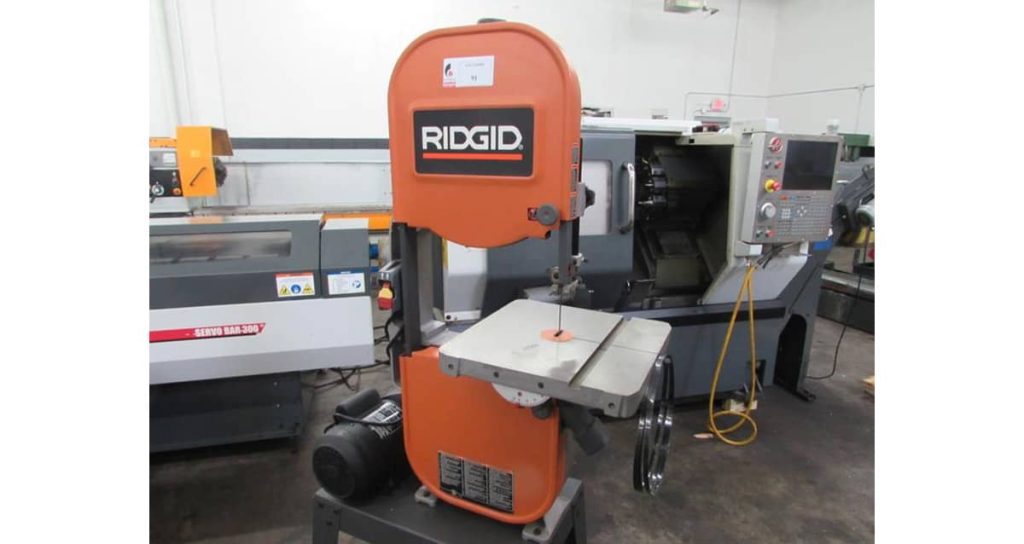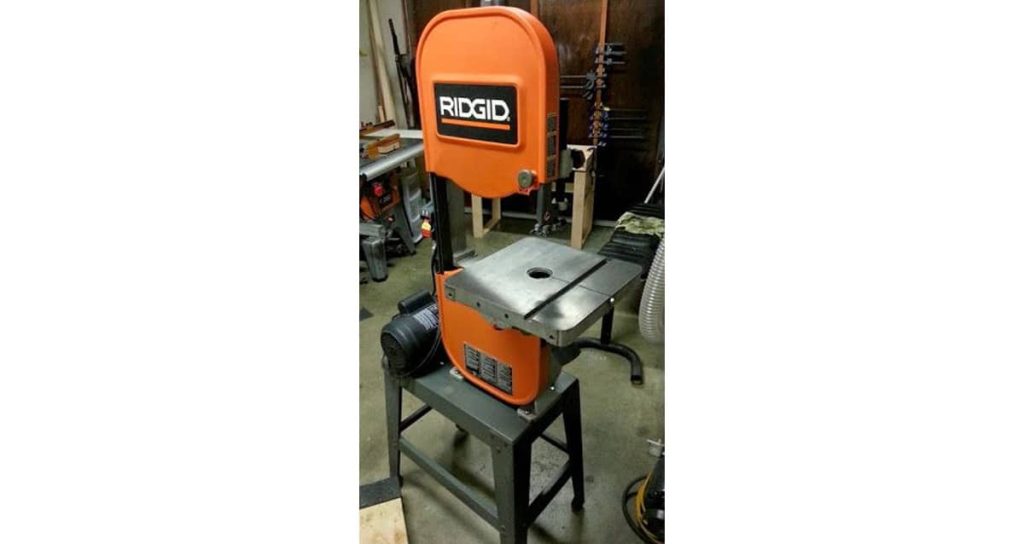Why Regular Service Matters
The Ridgid 14” bandsaw, models such as BS1400 and BS14002, is a trusted tool in many workshops. To keep it cutting cleanly and safely, routine maintenance is necessary. This guide goes through cleaning tips, part checks, and solutions for common issues so your saw stays dependable.
Safety First
Always disconnect the power before making adjustments or repairs. This prevents accidental starts and keeps the work environment safe.
Remove Dust and Build-Up
Dust and pitch can affect your saw’s performance if left unchecked. Clear wheels, blade guides, and the saw table with a stiff brush or wood block. Avoid sharp metal tools that may damage parts. A thin coat of automotive wax on the table also helps materials move smoothly.

Inspect Tires and Wheels
Check the condition of the tires on the wheels. If they’re cracked or hardened, it’s time to replace them. Urethane tires are recommended because they resist drying out. Warm the new tires in hot water before stretching them on for easier installation. Adjust blade tracking so the blade runs properly in the center of the wheel.
Motor, Belts, and Bearings
Dust can shorten the life of the motor, so keep it clean with a vacuum or blower. Belt tension should also be checked regularly since a loose belt can cause slipping or vibration. Many users prefer link belts for smoother operation.
Quick Service Checklist
| Area | Task |
|---|---|
| Safety | Unplug saw before maintenance |
| Cleaning | Remove dust and pitch, apply wax to the table |
| Tires & Wheels | Inspect for wear, replace with urethane, adjust tracking |
| Blade | Inspect regularly, tension correctly, upgrade if required |
| Motor & Belt | Clean motor, adjust tension, consider link belt |
| Vibration | Check alignment, balance, and motor mounts |
| Bearings | Inspect brushes, guides, and bearings for wear |
| Troubleshooting | Resolve drift, slowdowns, or unusual noises |
Managing Vibration
Excess vibration is often linked to blade tension, wheel imbalance, or loose mounts. Make sure blades are sharp and well-balanced, wheels are clean, and all mounts are secure. Correct guide adjustment also helps reduce vibration.
Blade Checks and Replacement
Blades should be inspected frequently for wear or damage. Replace them if dull, chipped, or cracked. Use narrow blades for curved cuts and wide ones for resawing. Maintain correct tension at all times, and consider premium brands for more consistent results.
Bearings and Components
Though most Ridgid bearings are sealed and maintenance-free, they should still be checked regularly. Replace worn dust brushes or guides to keep everything running efficiently.

Troubleshooting Common Problems
If the blade drifts or won’t stay centered, adjust the tracking knob on the upper wheel. If the saw struggles under load, check belt tension or cutting technique. Misalignment in the wheels or trunnion can also cause drift but can be corrected with adjustments.
Replacement Blades and Parts
Websites like Sawblade.com carry a wide range of Ridgid-compatible blades and replacement parts. They even provide custom sizes if your saw requires something specific.
Discover the Delta Shopmaster BS100
If you’re just starting with woodworking, the article “Delta Shopmaster BS100: A Guide for New Users” is a great place to begin. It walks through setup, features, and helpful tips to make sure you get the most from this compact bandsaw. A practical read for beginners who want accurate and smooth results from their projects.
Keeping up with routine care for your Ridgid 14” bandsaw will ensure smooth, safe, and accurate cuts. With regular cleaning, blade care, proper tracking, and occasional upgrades you’ll avoid downtime and extend the life of your machine.